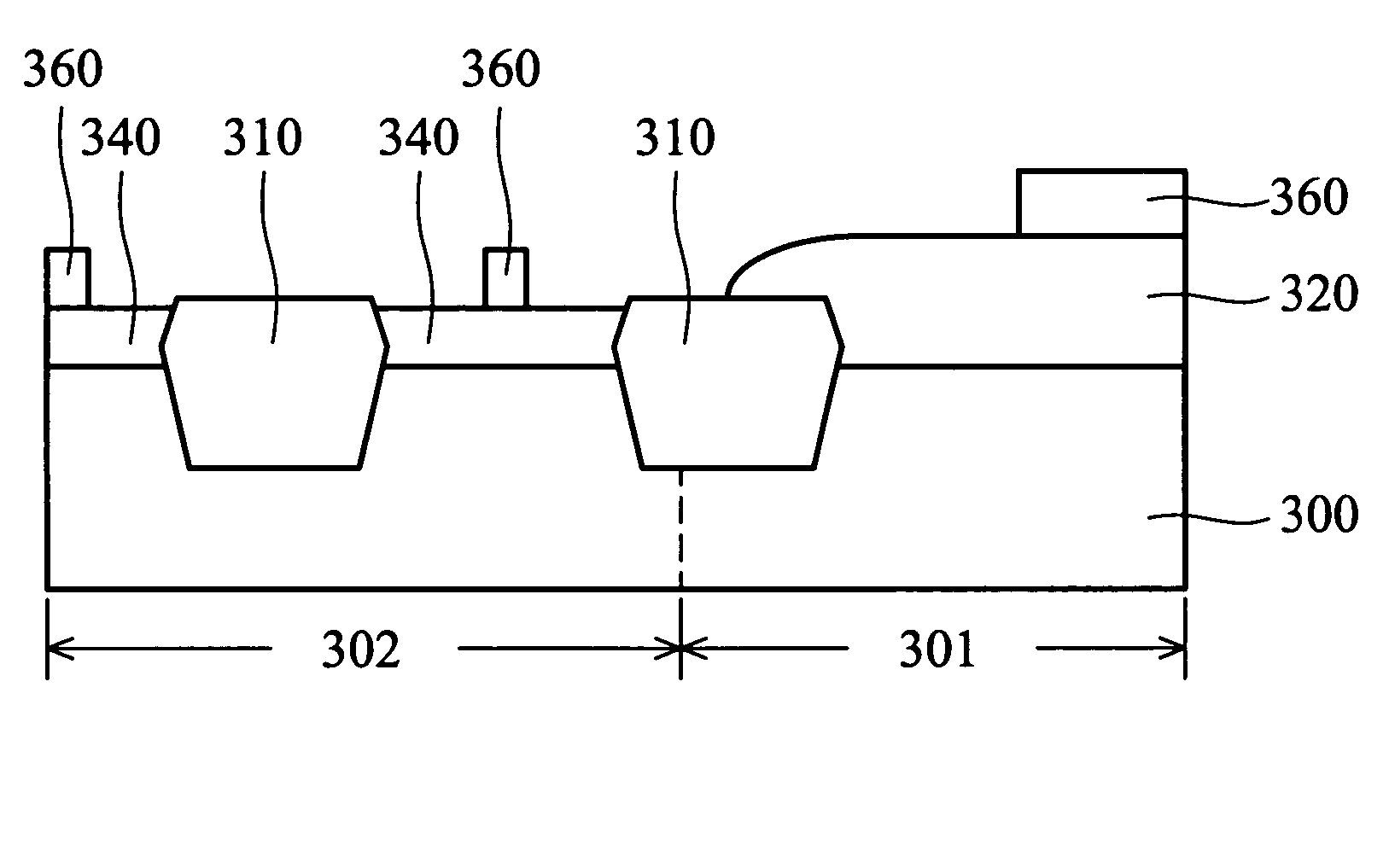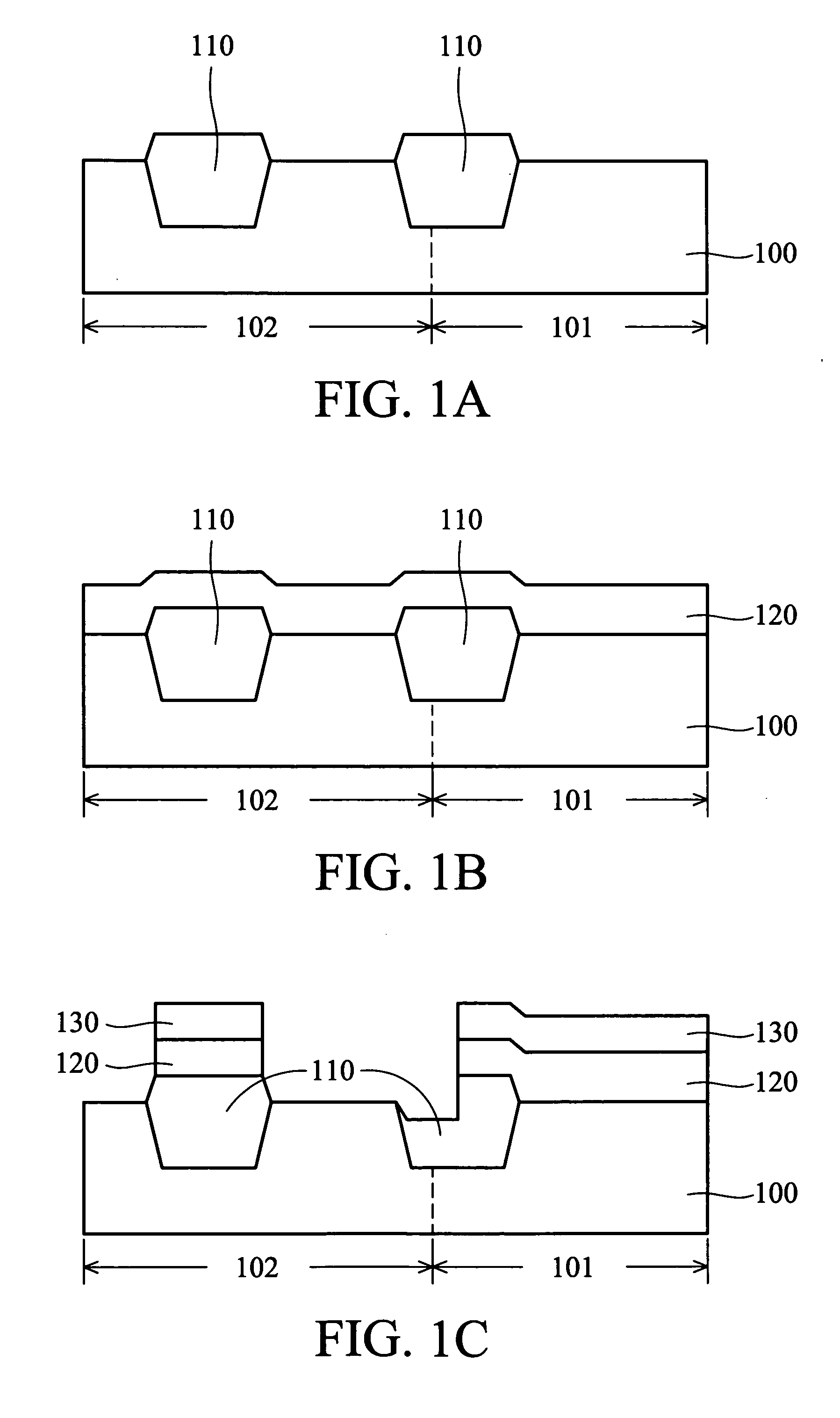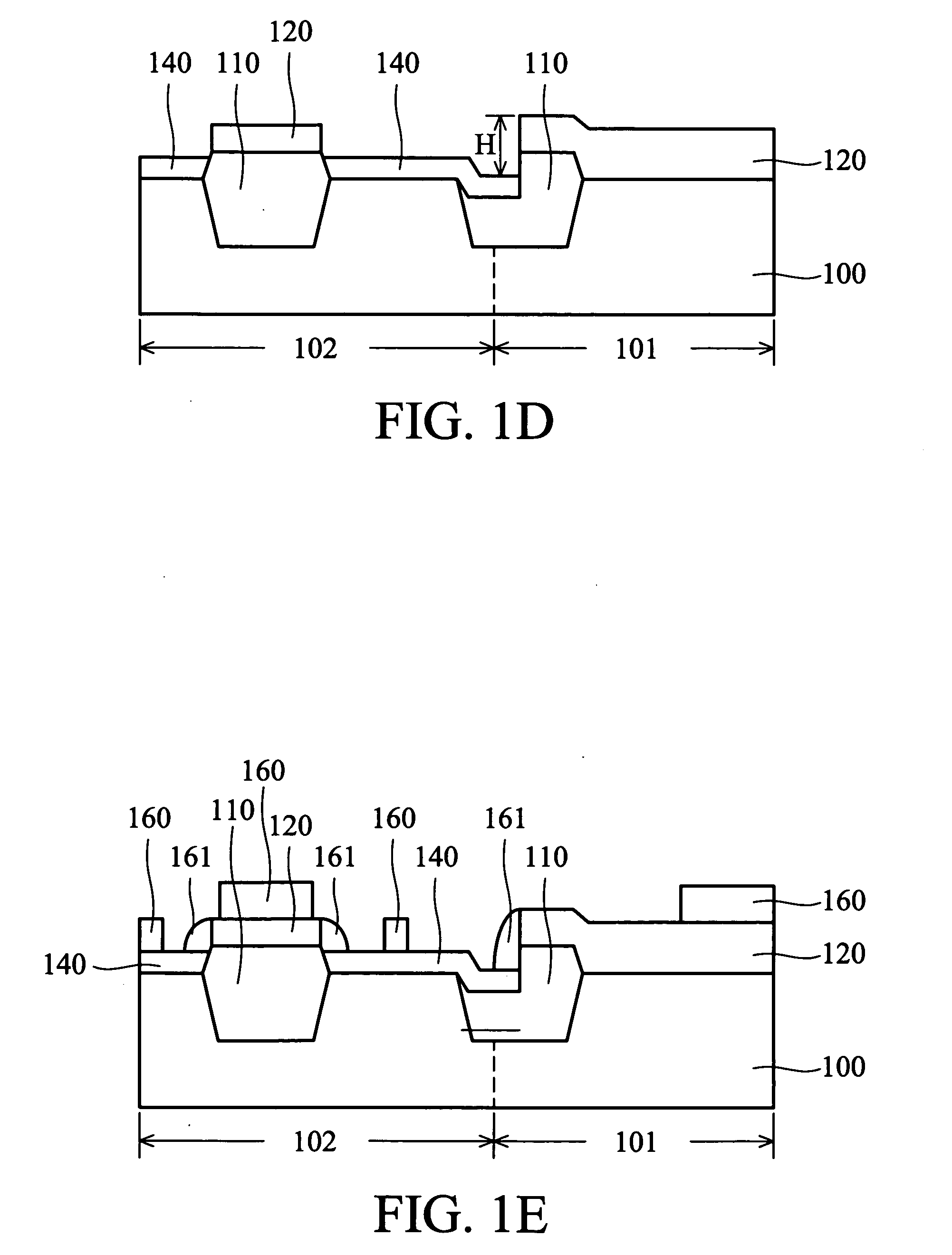Method of reducing step height
a technology of step height and step height, which is applied in the direction of semiconductor/solid-state device manufacturing, basic electric elements, electric apparatus, etc., can solve the problems of negative affecting process yield and electrical performance of devices, negative affecting etc., to improve process yield and electrical performance, reduce step height, and reduce the effect of step heigh
- Summary
- Abstract
- Description
- Claims
- Application Information
AI Technical Summary
Benefits of technology
Problems solved by technology
Method used
Image
Examples
Embodiment Construction
[0018] The following embodiments are intended to illustrate the invention more fully without limiting the scope of the claims, since numerous modifications and variations will be apparent to those skilled in this art.
[0019]FIGS. 3A through 3E are cross-sections of a method of reducing step height of the present invention.
[0020] In FIG. 3A, a substrate 300, usually single-crystalline silicon, is provided. The substrate 300 is usually covered by a pad oxide layer 303 on a surface. The substrate 300 comprises a high-voltage device area 301 and low-voltage device area 302 divided by an isolation structure 310. The isolation structure 310 can be a shallow trench isolation (STI) structure or field oxide (FOX) layer. In this embodiment, the pad oxide layer 303 is approximately 200 Å thick, and the isolation structure 310 is STI, and usually an oxide layer.
[0021] In FIG. 3B, a silicon nitride layer 350, preferably as thick as 500 Å or more, is formed on substrate 300, subsequently acting...
PUM
 Login to View More
Login to View More Abstract
Description
Claims
Application Information
 Login to View More
Login to View More - R&D
- Intellectual Property
- Life Sciences
- Materials
- Tech Scout
- Unparalleled Data Quality
- Higher Quality Content
- 60% Fewer Hallucinations
Browse by: Latest US Patents, China's latest patents, Technical Efficacy Thesaurus, Application Domain, Technology Topic, Popular Technical Reports.
© 2025 PatSnap. All rights reserved.Legal|Privacy policy|Modern Slavery Act Transparency Statement|Sitemap|About US| Contact US: help@patsnap.com



